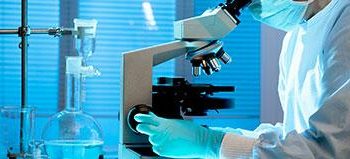The antibody production market comprises products that are required during the different stages of bioprocessing of antibodies, such as upstream processing, downstream processing, and filtration.
The global market is projected to reach USD 13.28 Billion by 2021 from USD 7.45 Billion in 2016, at a CAGR of 12.3% during the forecast period of 2016 to 2021.
The improved approval rate of therapeutic antibodies by regulatory authorities, patent expiry of blockbuster monoclonal antibodies, increasing adoption of targeted immunotherapy, and increased R&D expenditure of pharmaceutical and biotechnology companies are driving the overall market. The increasing prevalence of infectious diseases and rising demand for protein therapeutics are expected to provide growth opportunities for players operating in this market.
Restraints:
Cost Constraints Related to the Adoption of Membrane Filters
Opportunities:
# Rising Demand for Protein Therapeutics
#Increasing Risk of Infectious Diseases
# Patent Expiry of Blockbuster Mabs
Challenges:
# High Costs of Primary Antibodies
Download PDF Brochure for More Details
Objectives of the Study:
- To define, describe, and forecast the global antibody production market on the basis of process, end user, and region
- To provide detailed information regarding major factors influencing growth of the market (drivers, restraints, opportunities, and industry-specific challenges)
- To strategically analyze micromarkets with respect to individual growth trends, future prospects, and contributions to the overall market
- To analyze opportunities in the market for stakeholders and provide details of the competitive landscape for market leaders
- To forecast the size of the market with respect to four main regions, namely, North America, Europe, Asia-Pacific, and the Rest of the World
- To strategically profile the key players in the global antibody production market and comprehensively analyze their core competencies
- To track and analyze competitive developments such as joint ventures and alliances, mergers and acquisitions, new product/technology development, and research and development activities of the leading players in the global market
On the basis of end user, the antibody production market is segmented into pharmaceutical and biotechnology companies, research institutes, and diagnostic laboratories. The pharmaceutical and biotechnology companies segment is expected to account for the largest share of the market in 2016, and is projected to register the highest CAGR during the forecast period.
Geographically, the global antibody production market is divided into North America, Europe, Asia-Pacific, and the Rest of the World (Latin America, Middle East, and Africa). North America is expected to account for the largest share of the antibody production market in 2016, followed by Europe. The Asia-Pacific region offers significant growth opportunities for companies offering antibody production products, and is projected to grow at the highest CAGR during the forecast period.
Read More@
https://www.marketsandmarkets.com/PressReleases/antibody-production.asp
The antibody production market comprises several players such as GE Healthcare (U.S.), Thermo Fisher Scientific, Inc. (U.S.), Sartorius AG (Germany), Merck KGaA (Germany), Pall Corporation (U.S.), Sigma-Aldrich Corporation (Germany), Eppendorf AG (Germany), Cellab GmbH (Germany), INTEGRA Biosciences AG (Switzerland), and FiberCell Systems Inc. (U.S.).
New product launches; expansions; agreements, alliances, collaborations, and partnerships; mergers and acquisitions; and others (new service launches, product enhancements, and spin-offs) are the major strategies followed by players to achieve growth in this market. New product launches accounted for ~51% of the total developments undertaken by the players in this market. The key players that adopted this strategy are Eppendorf AG (Germany), Sartorius AG (Germany), Merck KGaA (Germany), GE Healthcare (U.S.), and Agilent Technologies, Inc. (U.S.).


